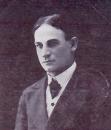Albert Edward Bailey was second son of farmer Christopher Bailey and Harriette Adelaide (née Colgan). His parents separated not long after his birth, however, and he was raised in Sydney by his mother, who moved there in the late-1860s or early-1870s, and her second husband, whom she married in 1879. Bert attended Crown Street School and Cleveland Street Public School, but left at age fifteen. Having decided not to work in his mother and step-father's drapery business (established in 1998) he initially worked as a telegram boy and floor manager at Crystal Palace skating rink before trying his hand at the variety stage as a descriptive vocalist.
In 1889 Bailey joined the touring theatrical company of Edmund Duggan, playing a wide variety of roles throughout Australia. In 1900 he and Duggan joined the company of high profile theatre producer and entrepreneur William Anderson, who was Duggan's brother-in-law. Seven years later Bailey and Duggan wrote The Squatter's Daughter; Or, The Land of the Wattle (1907) under the joint pseudonym "Albert Edmunds." This was produced by Anderson to great success and was adapted into a film in 1910, which Bailey directed as well as appeared in.
Bailey and Duggan collaborated on a number of follow up plays (with both men also acting in the productions), including The Man from Outback (1909), On Our Selection (1912), an adaptation of the stories of Steele Rudd and The Native Born (1913). Of these the most popular and lasting was On Our Selection. Bailey would perform the role of Dad Rudd on and off for the rest of his career.
In 1912 Bailey ended his 12 year association with Anderson and went into partnership with his business manager, Julius Grant. Together they leased Anderson's King's Theatre and managed one of the strongest theatrical entrepreneurial teams in Australia. Over the remainder of the decade and in to the 1920s Bailey and Grant produced many Australian plays and several big budget pantomimes. Bailey also frequently toured with his own dramatic company. He and Grant did suffer some commercial failures, such as a season of plays by William Shakespeare and a 1920 production of On Our Selection in London. Among their big successes were the pantomimes they produced in association with J. and N. Tait - notably Jack and Jill (1918), Mother Hubbard (1919), and Sinbad the Sailor (1920).
After touring in the Barry Conners' play The Patsy for 23 weeks in 1929, Bailey retired from performing, believing that talking films were making theatre unprofitable. He was induced to come out of retirement in 1932 by Stuart F. Doyle, however, when offered the opportunity to revive Dad Rudd in the a film version of On Our Selection. Bailey also co-wrote the screenplay and received £400 plus 60% of the profits. It is estimated that by the end of 1934 his share was close to £14,000.
Bailey played Dad Rudd in three more films, while also contributing to the script. All four Rudd films were directed by Ken G. Hall. After Dad Rudd, MP (1940), Bailey once again retired, this time as a wealthy man. He is believed to have come out of retirement again only once, making a cameo appearance in a propaganda short made for the war effort, South West Pacific (1943). In his Australian Dictionary of Biography entry Andrew Pike records that in his leisure Bailey 'enjoyed boating and bowls and was a member of the Savage Club, Melbourne, and Tattersall's and Rose Bay Bowling clubs, Sydney. Predeceased by his wife in 1932 [he was] survived by his only daughter, [and] died on 30 March 1953 at his home at Darlinghurst' ('Bailey, Albert Edward, 1868-1953')
 6006520404860861965.jpg
6006520404860861965.jpg